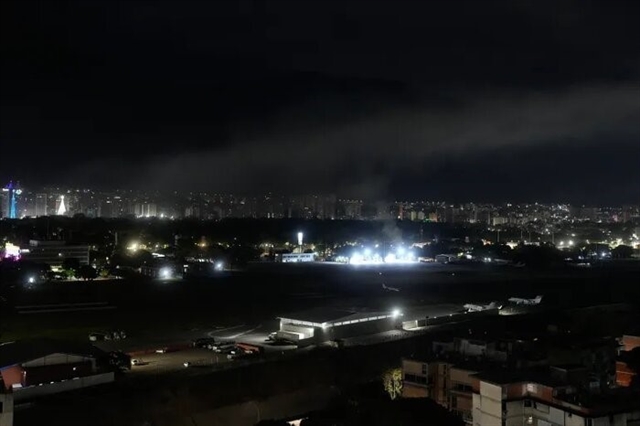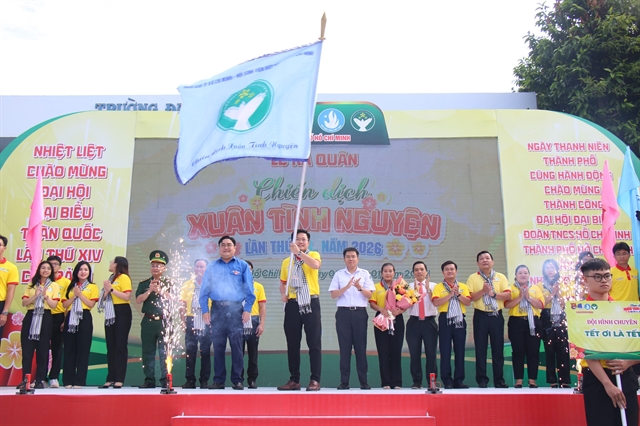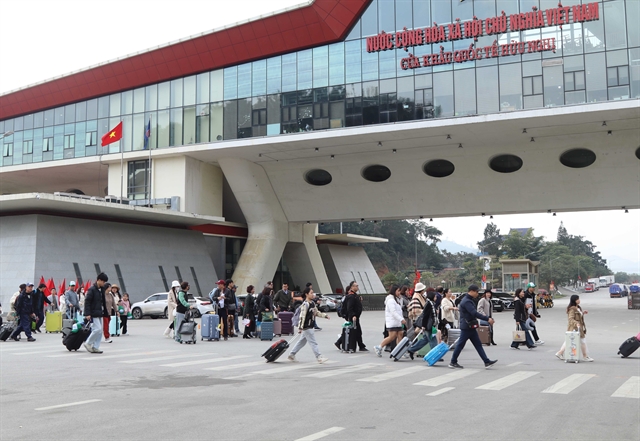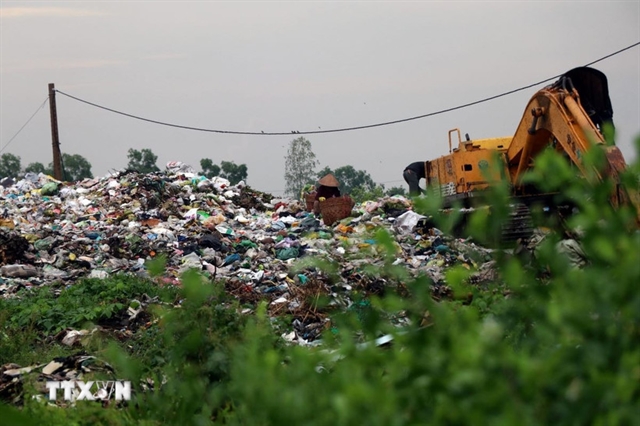 Environment
Environment


|
| Experts listen to a presentation at a workshop on invasive species. — VNS Photo Thu Trang |
HÀ NỘI — As a country rich in biodiversity, Việt Nam remains highly vulnerable to biological invasions due to limited data, lack of long-term monitoring, insufficient resources and intersectoral coordination, and low public awareness, said Deputy Minister of Agriculture and Environment Nguyễn Quốc Trị.
Speaking at a national workshop on enhancing the management of invasive alien species (IAS) in Việt Nam held on Thursday in Hà Nội, Trị said that in Việt Nam, species like the golden apple snail, mimosa pigra and water hyacinth have caused severe impacts on agricultural production, freshwater ecosystems and local livelihoods.
He also emphasised the importance of preventing and controlling invasive species, one of the five major causes of global biodiversity loss.
The national workshop was organised by the Ministry of Agriculture and Environment in collaboration with the United Nations Development Programme (UNDP).
It gathered nearly 100 participants from ministries, local authorities, national parks, nature reserves, international organisations, research institutes and relevant businesses.
The workshop is part of the 'Early Action Support' project funded by the Global Environment Facility, which aims to strengthen institutional capacity and promote coordinated action in monitoring, preventing and controlling IAS in Việt Nam.
Preventing harm
According to the 2023 IPBES Invasive Alien Species Report by the Intergovernmental Science-Policy Platform on Biodiversity and Ecosystem Services (IPBES), IAS are among the top five global drivers of biodiversity loss.
Over 3,500 invasive species have been documented to cause harm, with economic damages estimated at US$420 billion annually.
Around 200 alien species are introduced into new ecosystems each year due to human activities. Without timely intervention, this number could increase by one-third from 2005 to 2050.
However, 83 per cent of countries still lack specific legislation to prevent and manage IAS.
The report stresses that prevention is the most effective and cost-efficient strategy, especially for sensitive ecosystems such as islands and inland waters.
If detected early and adequately resourced, eradication, containment, control and ecosystem restoration are entirely feasible.
The 2023 IPBES report is the first global assessment to systematically compile evidence and solutions on this issue, supporting the achievement of Target 6 of the Kunming–Montreal Global Biodiversity Framework and the Sustainable Development Goals.
Deputy Minister Trị expressed his hope that the workshop would provide a valuable forum for experts and organisations to exchange experiences and share solutions, management models and control techniques, contributing to the effective implementation of Việt Nam’s National Biodiversity Strategy to 2030.
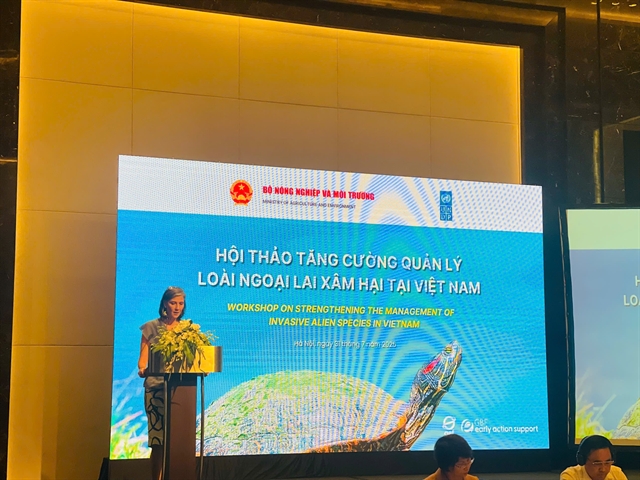
|
| UNDP Resident Representative in Việt Nam Ramla Khalidi speaks at the event. — VNS Photo Thu Trang |
UNDP Resident Representative in Việt Nam Ramla Khalidi said: “Addressing invasive alien species is not only about protecting ecosystems. It is about protecting people: their health, their livelihoods, their future. Every step of the invasion process matters. Every delay has a cost.”
“Policies and institutions are not enough. We need people raising public awareness, building local capacity, engaging the private sector, empowering communities,” she said.
Workshop discussions
Participants at the workshop shared practical experiences and effective control models.
One notable example is the management of mimosa pigra at Tràm Chim National Park, where the infested area was reduced from over 2,000 hectares in 2006 to just 22ha last year through a combination of ecological measures and hydrological management.
In the Mekong Delta, water hyacinth is being collected and processed into organic fertiliser, animal feed and handicrafts, simultaneously controlling biomass and generating income for local communities.
Experts also introduced advanced detection and analytical methods, such as environmental DNA (eDNA), drone-based remote sensing, species distribution modelling, artificial intelligence and bioacoustic monitoring – tools with high potential for effective surveillance and early warning in Việt Nam.
Workshop attendees also presented and gathered feedback on a draft circular about the national list of invasive alien species, detailing procedures for investigation, identification, assessment and issuance of the official list.
Participants agreed that to meet the goals of the National Biodiversity Strategy and fulfil international commitments, Việt Nam must enhance intersectoral coordination across agriculture, environment, transportation and quarantine methods and local authorities.
Community should take a leading role in biodiversity conservation and invasive species control.
The workshop marked a significant step forward in strengthening cross-sector and cross-regional collaboration, bridging policy, science and practical action toward a safe and sustainable ecological future for Việt Nam and future generations. — VNS

